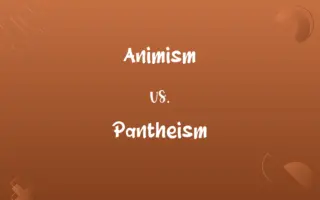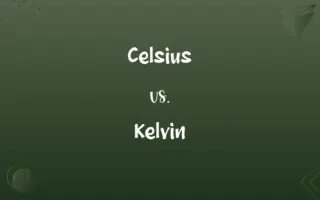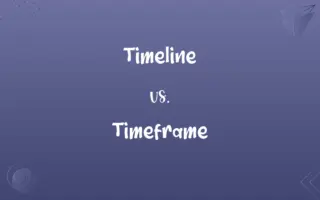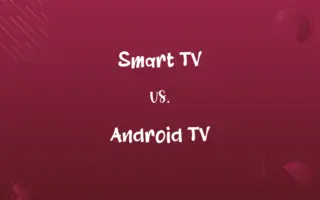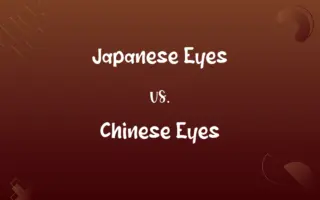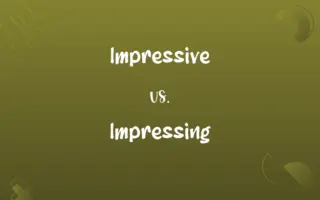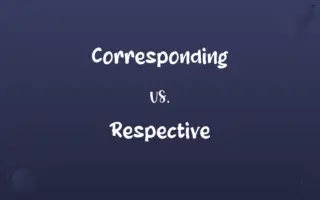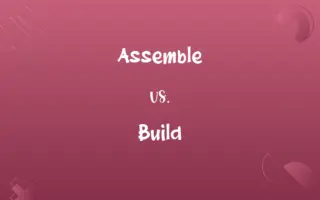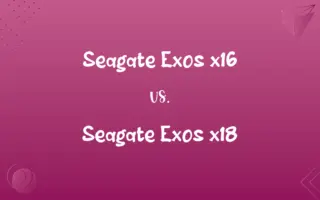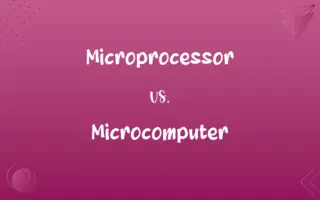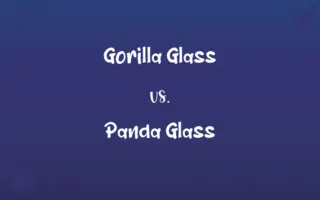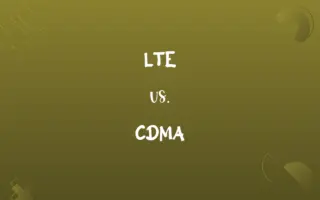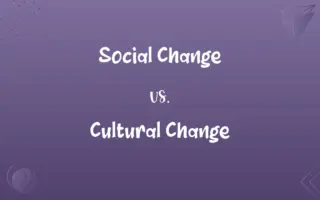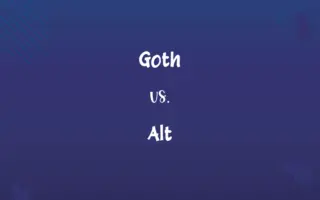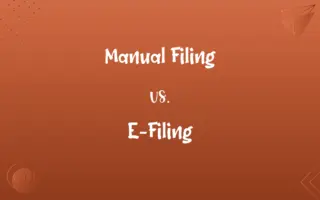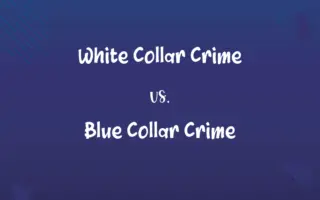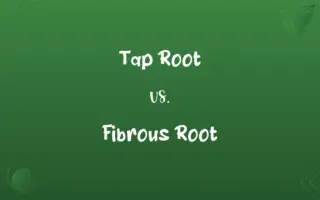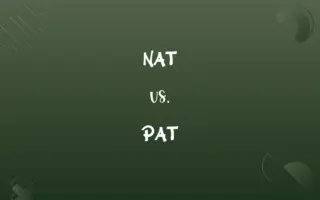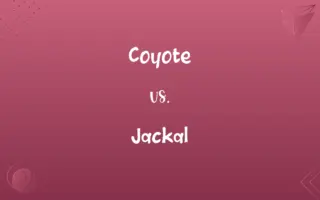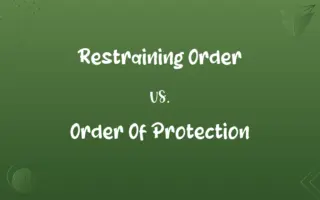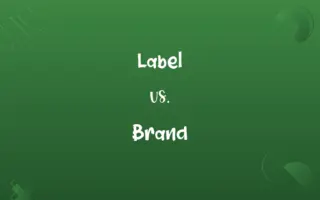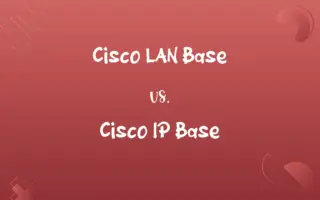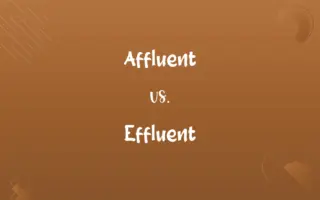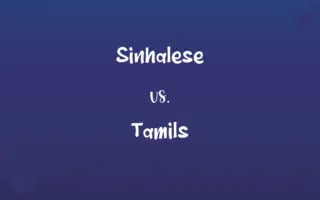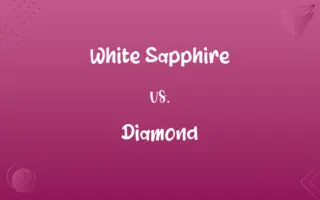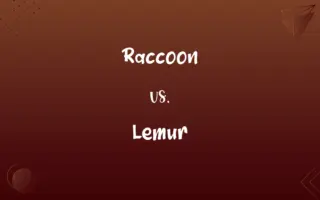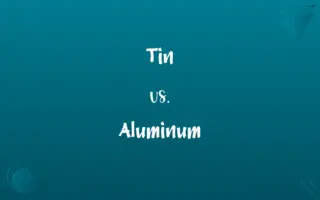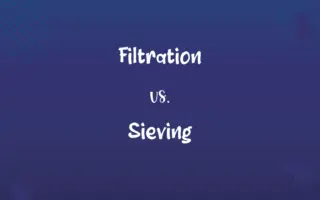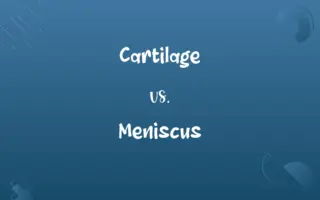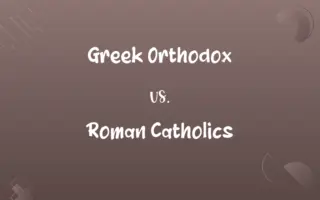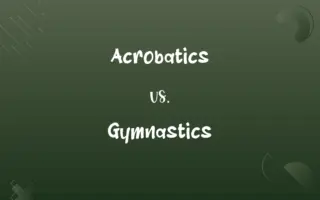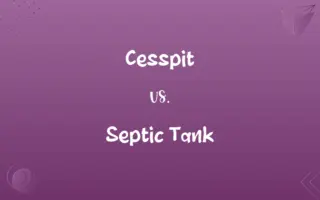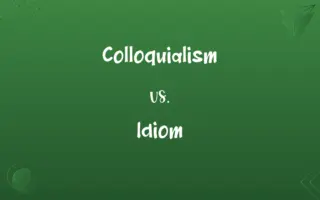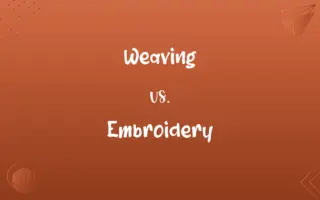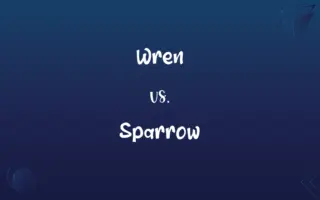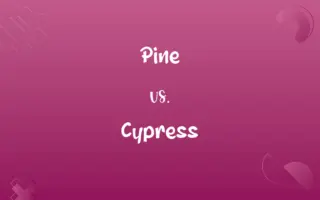Plastid vs. Chloroplast: Know the Difference

By Shumaila Saeed || Updated on December 25, 2023
Plastids are diverse organelles found in plant cells, responsible for storage and photosynthesis, while chloroplasts, a type of plastid, specifically carry out photosynthesis.
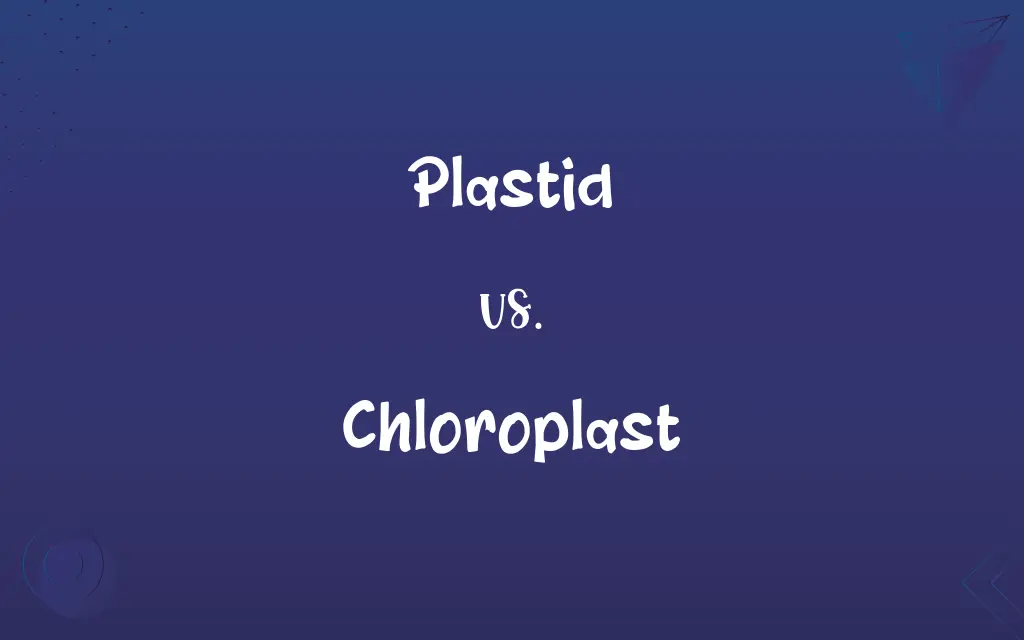
Key Differences
Plastids are multi-functional organelles found in the cells of plants and algae, integral to processes like storage and synthesis of chemical compounds. Chloroplasts, a subset of plastids, are specifically involved in photosynthesis, converting light energy into chemical energy.
Shumaila Saeed
Nov 13, 2023
In terms of structure, plastids can vary widely, encompassing pigmented and non-pigmented forms, each serving different functions. Chloroplasts, however, are distinctively green due to the presence of chlorophyll, which is crucial for absorbing light.
Shumaila Saeed
Nov 13, 2023
Plastids often change form and function in response to developmental stages or environmental factors, demonstrating a high degree of plasticity. Chloroplasts maintain a consistent role in photosynthesis, with their structure and function remaining relatively stable.
Shumaila Saeed
Nov 13, 2023
While all chloroplasts are plastids, not all plastids are chloroplasts. This distinction underlines the broader categorization of plastids, which includes chloroplasts as a specialized group.
Shumaila Saeed
Nov 13, 2023
The genetic material in plastids is diverse, reflecting their varied functions in the cell. Chloroplasts, specifically, contain DNA that encodes components critical for photosynthesis.
Shumaila Saeed
Nov 13, 2023
ADVERTISEMENT
Comparison Chart
Function
Varied, including storage and synthesis
Specifically for photosynthesis
Shumaila Saeed
Nov 13, 2023
Role in Photosynthesis
Not all involved in photosynthesis
Primarily responsible for photosynthesis
Shumaila Saeed
Nov 13, 2023
Color Variations
Can be colorless or variously colored
Characteristically green due to chlorophyll
Shumaila Saeed
Nov 13, 2023
ADVERTISEMENT
Plastid and Chloroplast Definitions
Plastid
Plastids contain their own DNA, separate from the cell's nuclear DNA.
Scientists study plastid DNA to understand plant evolution and genetics.
Shumaila Saeed
Nov 13, 2023
Chloroplast
Chloroplasts are a type of plastid in plants and algae, crucial for photosynthesis.
Chloroplasts absorb sunlight to produce food for the plant through photosynthesis.
Shumaila Saeed
Nov 13, 2023
Plastid
Plastids can differentiate into various forms depending on their function in the cell.
In the leaf cells, some plastids transform into chloroplasts for photosynthesis.
Shumaila Saeed
Nov 13, 2023
Chloroplast
Chloroplasts are found in the cells of green plants and eukaryotic algae.
Under a microscope, you can see the chloroplasts moving within algae cells.
Shumaila Saeed
Nov 13, 2023
Plastid
Plastids are involved in the production of essential molecules like fatty acids and amino acids.
Plastids play a crucial role in synthesizing amino acids, vital for plant growth.
Shumaila Saeed
Nov 13, 2023
ADVERTISEMENT
Chloroplast
Chloroplasts convert light energy into chemical energy in the form of glucose.
Chloroplasts are vital for a plant's energy production through the process of photosynthesis.
Shumaila Saeed
Nov 13, 2023
Plastid
Plastids are organelles in plant cells responsible for synthesis and storage of food.
The plastids in plant cells store starch, essential for the plant's energy needs.
Shumaila Saeed
Nov 13, 2023
Chloroplast
Chloroplasts have a unique double membrane structure.
The double membrane of chloroplasts is key to its function in photosynthesis.
Shumaila Saeed
Nov 13, 2023
Plastid
Any of several cytoplasmic organelles, such as chloroplasts, that contain genetic material, have a double membrane, and are often pigmented. Plastids are found in plants, algae, and certain other eukaryotic organisms and have various physiological functions, such as the synthesis and storage of food.
Shumaila Saeed
Oct 19, 2023
Chloroplast
Chloroplasts contain the green pigment chlorophyll, which captures light energy.
The green color of leaves is due to chlorophyll in the chloroplasts.
Shumaila Saeed
Nov 13, 2023
Plastid
(cytology) Any of various organelles found in the cells of plants and algae, often concerned with photosynthesis
Shumaila Saeed
Oct 19, 2023
Chloroplast
A plastid that contains chlorophyll and is found in the cells of green plants and algae.
Shumaila Saeed
Oct 19, 2023
Plastid
A formative particle of albuminous matter; a monad; a cytode. See the Note under Morphon.
Shumaila Saeed
Oct 19, 2023
Chloroplast
(cytology) An organelle, found in the cells of green plants and in photosynthetic algae, where photosynthesis takes place, characterized by a high concentration of chlorophyll and two membranes.
Shumaila Saeed
Oct 19, 2023
Plastid
Any of several types of minute granules found in the protoplasm of vegetable cells, having their own membrane, robosomes, and DNA. Among plant cells the most common are chloroplasts, which contain the chlorophyll and the photosynthetic machinery of the cell. They are divided by their colors into three classes, chloroplastids, chromoplastids, and leucoplastids.
Shumaila Saeed
Oct 19, 2023
Chloroplast
A plastid containing chlorophyll, developed only in cells exposed to the light. Chloroplasts are minute flattened granules, usually occurring in great numbers in the cytoplasm near the cell wall, and consist of a colorless ground substance saturated with chlorophyll pigments. Under light of varying intensity they exhibit phototactic movements. In animals chloroplasts occur only in certain low forms.
Shumaila Saeed
Oct 19, 2023
Plastid
Any of various small particles in the cytoplasm of the cells of plants and some animals containing pigments or starch or oil or protein
Shumaila Saeed
Oct 19, 2023
Chloroplast
Plastid containing chlorophyll and other pigments; in plants that carry out photosynthesis
Shumaila Saeed
Oct 19, 2023
Plastid
Plastids are inherited maternally in most plants.
The study of plastids helps in tracing the maternal lineage of plants.
Shumaila Saeed
Nov 13, 2023
Repeatedly Asked Queries
What are plastids?
Plastids are organelles in plant cells involved in storage and synthesis processes.
Shumaila Saeed
Nov 13, 2023
Are all plastids involved in photosynthesis?
No, only chloroplasts, a type of plastid, are specifically involved in photosynthesis.
Shumaila Saeed
Nov 13, 2023
Do chloroplasts have their own DNA?
Yes, chloroplasts contain their own DNA, which is crucial for their photosynthetic function.
Shumaila Saeed
Nov 13, 2023
What is a chloroplast?
Chloroplasts are a type of plastid in plants and algae that perform photosynthesis.
Shumaila Saeed
Nov 13, 2023
Can plastids change their function?
Yes, some plastids can transform into different types, like chloroplasts, depending on the cell's needs.
Shumaila Saeed
Nov 13, 2023
Are plastids found in all plant cells?
Most plant cells contain plastids, but their types and numbers can vary.
Shumaila Saeed
Nov 13, 2023
Do plastids have a role in plant color?
Yes, certain plastids like chromoplasts contribute to the color of fruits and flowers.
Shumaila Saeed
Nov 13, 2023
Can animals have chloroplasts?
No, chloroplasts are specific to plants and some algae.
Shumaila Saeed
Nov 13, 2023
How are plastids inherited in plants?
Plastids are generally inherited maternally in most plants.
Shumaila Saeed
Nov 13, 2023
Are chloroplasts visible under a microscope?
Yes, chloroplasts can be seen as green structures within plant cells under a microscope.
Shumaila Saeed
Nov 13, 2023
How do chloroplasts help plants?
Chloroplasts convert sunlight into chemical energy, providing the energy plants need to grow.
Shumaila Saeed
Nov 13, 2023
Can the number of chloroplasts in a cell change?
Yes, the number of chloroplasts can increase or decrease depending on the plant's exposure to light.
Shumaila Saeed
Nov 13, 2023
Why are chloroplasts green?
Chloroplasts are green due to the presence of chlorophyll, a pigment that absorbs light for photosynthesis.
Shumaila Saeed
Nov 13, 2023
What is the main function of chloroplasts?
The main function of chloroplasts is to carry out photosynthesis.
Shumaila Saeed
Nov 13, 2023
Do all plastids contain chlorophyll?
No, only chloroplasts consistently contain chlorophyll.
Shumaila Saeed
Nov 13, 2023
Do plastids contribute to plant growth?
Yes, plastids play essential roles in synthesis and storage, contributing to plant growth.
Shumaila Saeed
Nov 13, 2023
Are chloroplasts found in all algae?
Chloroplasts are found in green algae, but not all algae types.
Shumaila Saeed
Nov 13, 2023
What differentiates chloroplasts from other plastids?
Chloroplasts are specifically designed for photosynthesis, unlike other plastids.
Shumaila Saeed
Nov 13, 2023
What is the evolutionary origin of chloroplasts?
Chloroplasts are believed to have originated from cyanobacteria through a process called endosymbiosis.
Shumaila Saeed
Nov 13, 2023
Can plastids be used in biotechnology?
Yes, plastids are being explored for applications in biotechnology, such as genetic engineering.
Shumaila Saeed
Nov 13, 2023
Share this page
Link for your blog / website
HTML
Link to share via messenger
About Author
Written by
Shumaila SaeedShumaila Saeed, an expert content creator with 6 years of experience, specializes in distilling complex topics into easily digestible comparisons, shining a light on the nuances that both inform and educate readers with clarity and accuracy.
